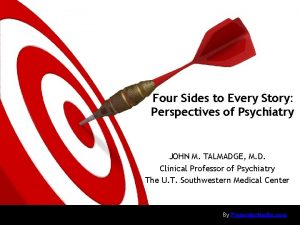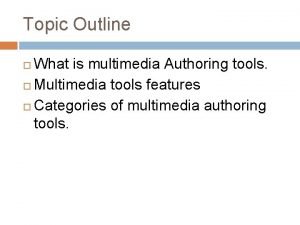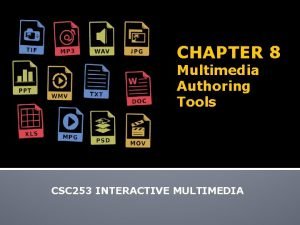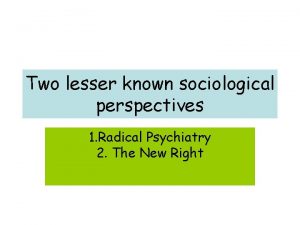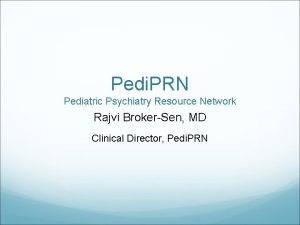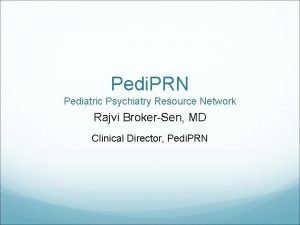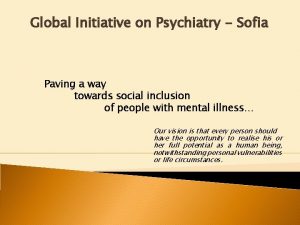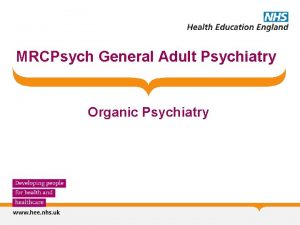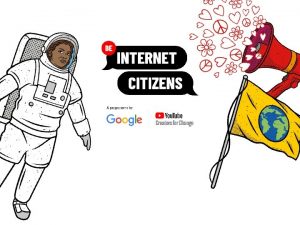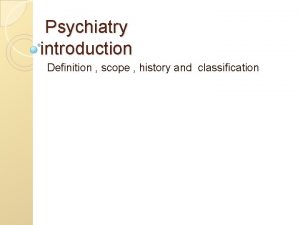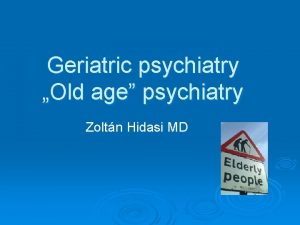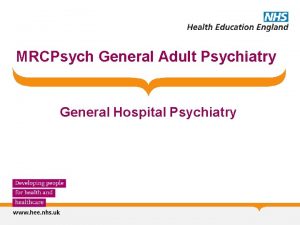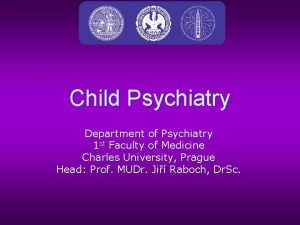Four Sides to Every Story Perspectives of Psychiatry



























- Slides: 27

Four Sides to Every Story: Perspectives of Psychiatry JOHN M. TALMADGE, M. D. Clinical Professor of Psychiatry The U. T. Southwestern Medical Center By Presenter. Media. com

ON TARGET FOUR SIDES TO EVERY STORY

ON TARGET Practical Tip: To Remember the Four Sides, Remember the acronym “HIDE. ” HIDE stands for: • • HAS IS DOES ENCOUNTERS

ON TARGET Disease The Central Idea • “What the patient has. ” • The “H” in “HIDE. ” One single method cannot explain all psychiatric conditions. We need to consider every patient from four points of view. This diagram shows the four perspectives, the foundation of The Johns Hopkins Model. These can be easily remembered with the acronym “HIDE. ” • Has • Is • Does • Encounters Life Story Dimensions • “What the patient encounters. ” • The “E” in “HIDE” • “Who the patient is. ” • The “I” in “HIDE. ” Behavior • “What the patient does. ” • The “D” in “HIDE. ” 0 • And Another

ON TARGET The Disease Perspective: What the patient has Etiology Pathology Clinical Syndrome • What causes the system to break down • What is the broken part of the system • The pattern of signs and symptoms of illness In general medicine, examples include infections, neoplasms, immune deficiencies, hormonal deficits, physical trauma, system failures, etc. An example in psychiatry is dementia, where cognitive decline is related to a loss of brain tissue. Schizophrenia is now thought to be a brain disease linked to loss of gray matter. Psychiatry has not advanced to the point where we precisely understand (at a biological level) the etiology of most mental disorders. For example, in general medicine we say that cough, chest pain, shortness of breath, and expectoration make up a pulmonary syndrome. Defining psychiatric syndromes is challenging and at times controversial, because we do not have scientific understanding equal to the medical knowledge of other body systems.

ON TARGET Summary Points: The Disease Perspective 1. Concerns an abnormality in the structure or function of the brain expressed in the development of a syndrome 2. Has an underlying conceptual triad of clinical syndrome, pathology, and etiology 3. Applies to psychiatric conditions that a person has 4. Suggests curing as a treatment goal

ON TARGET The Dimensional Perspective: Who the patient is Potentials Provocations Responses • Where an individual rests on the relevant dimension (intelligence, resilience, extroversion etc. ) • The specific circumstances of the poor fit for the individual • The feelings and behavior that result from the poor fit Intelligence Temperament -Neuroticism -Extraversion -Openness -Agreeableness -Conscientiousness “Using one’s gifts” Example: A person with average intelligence who grows up in a high-achieving family may inadvertently be pushed by the family beyond his abilities to the point of distress and maladaptive behavior. Or a shy, introverted person with an otherwise successful career may falter when having to lead a team or give an inspirational speech. The condition arises from a poor fit between who the person is and his circumstances. Treatment consists of helping him recognize and accept who he is, helping him adapt to who he is by noticing, anticipating, managing and avoiding circumstances that provoke distress.

ON TARGET Summary Points: The Dimensional Perspective 1. Focuses on individual psychological dimensions that are universal, measurable, and graded (cognition and temperament) 1. Has an underlying conceptual triad of potential, provocation, and response 1. Applies to psychiatric conditions that arise from who a person is 1. Suggests guidance as a goal.

ON TARGET The Behavior Perspective: What the patient does Physiological Drive Conditioned Learning Choice • Development of a desire for the maladaptive behavior that is experienced strongly. • Maintenance of the behavior by the rules of conditioned learning theory, reinforcement/reward • Initial choice and late disruption of free choice These three elements form a triad, and each interacts with the others to determine behavior.

ON TARGET Summary Points: The Behavior Perspective 1. Seeks to identify and explain disorders of individual choice 1. Has an underlying triad of choice, physiologic drive, and conditioned learning. 1. Applies to psychiatric conditions characterized by what a person does 1. Suggests interrupting as a goal.

ON TARGET The Life Story Perspective: What patient encounters Setting Sequence Outcome • The unique situation that is the individual’s life • The unfolding of the circumstances that impact the individual • The individual’s psychological condition in relation to the stresses and challenges of life Every individual goes through life with needs, desires, goals, and hopes. When someone encounters life circumstances that disrupt needs, desires, goals, and hopes, they can become distressed or demoralized. Demoralization is a state of mind in which one has the sense of losing mastery over circumstances. There are many examples of life encounters that create understandable distress: grief and loss, disappointment and failure, anxiety-producing external forces, conflicts with others, fears about uncertainty of the future, and so on.

ON TARGET Summary Points: The Life Story Perspective 1. Is a personal perspective 1. Is based on the logic of narrative with the triad of setting, sequence, and outcome, which is produced meaningfully and understandably 1. Applies to psychiatric conditions that a person has encountered 1. Suggests rescripting as a goal.

ON TARGET Disease The Goals of Treatment • The goal is to support and cure, e. g. with medication The goal of treatment depends upon the origin of a patient’s psychiatric condition. Each perspective has a corresponding treatment goal. Treatment goals need to be prioritized for each patient in order to maximize successful outcomes and avoid needless interventions. Life Story Dimension • The goal is to rescript. • The goal is to guide. Behavior • The goal is to interrupt or to convert.

ON TARGET Case Examples from Popular Stories in Film A Practical Teaching Tool for Discussion MOVIE CHARACTERS AS EXAMPLES Characters in the movies can be useful for illustrating the four perspectives of psychiatry. Almost all of your students will have seen at least one of the following films, and the people portrayed demonstrate the importance of seeing the individual from all four of the perspectives. FLIGHT A BEAUTIFUL MIND SILVER LININGS PLAYBOOK 28 DAYS GOOD WILL HUNTING

ON TARGET Case Example: Whip Whitaker In the movie “Flight, ” Whip Whitaker is an extremely skilled airline pilot whose performance prevents a passenger jet from crashing and killing everyone aboard. His drug and alcohol problems destroy his career despite his skill, intelligence, and strength of character.

ON TARGET If we focus only on what Whip Whitaker has (substance abuse disorder) and what he does (his erratic behavior and his episodic intoxication), can we really effectively help him?

ON TARGET Case Example: John Nash In the movie “A Beautiful Mind, ” John Nash suffers the onset of schizophrenia during his early years as a brilliant student at Princeton.

ON TARGET If we focus only on what John Nash has (schizophrenia) and what he does (his psychotic and paranoid behavior), can we really effectively help him?

ON TARGET Case Example: Pat Solitano In the movie “Silver Linings Playbook, ” Pat Solitano is diagnosed with bipolar disorder and confined to a psychiatric hospital for eight months.

ON TARGET Case Example: Gwen Cummings In the movie “ 28 Days, ” Gwen Cummings (Sandra Bullock) chooses rehab over prison, gradually accepting that she has an addiction after resisting what the treatment program has to offer.

ON TARGET Case Example: Will Hunting In the movie “Good Will Hunting, ” therapist Sean Macguire (Robin Williams) tries to help Will work through the suffering linked to childhood abuse.

ON TARGET Every picture tells a different, unique story. Will Hunting is brilliant but has suffered painful circumstances. Who he is and what he encounters are essential parts of understanding and helping him. John Nash is brliiant but suffers from a brain disease, schizophrenia. What he has, the syndrome that disables him, can be treated most effectively if all four perspectives are part of the approach. Pat Solitano suffers from a disorder that has biological roots (bipolar disorder), and the condition responds well to medication. His behavior (what he does) gets him in serious trouble. However, as the story shows in the movie, his recovery is intertwined with who he is as a person and what he has encountered in life.

ON TARGET Disease The Central Idea • “What the patient has. ” • The “H” in “HIDE. ” One single method cannot explain all psychiatric conditions. We need to consider every patient from four points of view. This diagram shows the four perspectives, the foundation of The Johns Hopkins Model. These can be easily remembered with the acronym “HIDE. ” • Has • Is • Does • Encounters Life Story Dimensions • “What the patient encounters. ” • The “E” in “HIDE” • “Who the patient is. ” • The “I” in “HIDE. ” Behavior • “What the patient does. ” • The “D” in “HIDE. ” 0 • And Another

ON TARGET Disease The Goals of Treatment • The goal is to support and cure, e. g. with medication The goal of treatment depends upon the origin of a patient’s psychiatric condition. Each perspective has a corresponding treatment goal. Treatment goals need to be prioritized for each patient in order to maximize successful outcomes and avoid needless interventions. Life Story Dimension • The goal is to rescript. • The goal is to guide. Behavior • The goal is to interrupt or to convert.

ON TARGET Discussion Pick the character from one of the movies you have seen. Consider the character from each of the four perspectives. What the person HAS. Who the person IS. What the person DOES. What the person ENCOUNTERS.

ON TARGET Disease SUMMARY • “What the patient has. ” • The “H” in “HIDE. ” One single method cannot explain all psychiatric conditions. We need to consider every patient from four points of view. This diagram shows the four perspectives, the foundation of The Johns Hopkins Model. These can be easily remembered with the acronym “HIDE. ” • Has • Is • Does • Encounters Life Story Dimensions • “What the patient encounters. ” • The “E” in “HIDE” • “Who the patient is. ” • The “I” in “HIDE. ” Behavior • “What the patient does. ” • The “D” in “HIDE. ” 0 • And Another

Find me on the web at http: //johntalmadge. com CONTACT INFORMATION: JOHN M. TALMADGE, M. D. Clinical Professor of Psychiatry The University of Texas Southwestern Medical Center john. talmadge@utsouthwestern. edu 214 -673 -9250 By Presenter. Media. com
 Four sides to every story
Four sides to every story Every picture has a story and every story has a moment
Every picture has a story and every story has a moment Shape with one side
Shape with one side Four theoretical perspectives
Four theoretical perspectives Experientalist
Experientalist Icon based authoring tools example
Icon based authoring tools example Authoring tools in multimedia
Authoring tools in multimedia Four major perspectives of psychology
Four major perspectives of psychology Personological and life story perspectives
Personological and life story perspectives Radical psychiatry sociology
Radical psychiatry sociology Mse assessment
Mse assessment Geriatric psychiatry definition
Geriatric psychiatry definition Forensic psychiatry vs forensic psychology
Forensic psychiatry vs forensic psychology Abstract thinking examples
Abstract thinking examples Psychiatry shelf exam percentiles
Psychiatry shelf exam percentiles Cécile hanon
Cécile hanon Psychiatry in ethiopia
Psychiatry in ethiopia Daniel chen md
Daniel chen md Define yobbish
Define yobbish Addiction expert witness
Addiction expert witness National network of child psychiatry access programs
National network of child psychiatry access programs Community geriatric psychiatry
Community geriatric psychiatry Core psychiatry
Core psychiatry National network of child psychiatry access programs
National network of child psychiatry access programs Asclepiades father of psychiatry
Asclepiades father of psychiatry What is forensic psychiatry
What is forensic psychiatry Gipsofia
Gipsofia Every nation and every country
Every nation and every country
